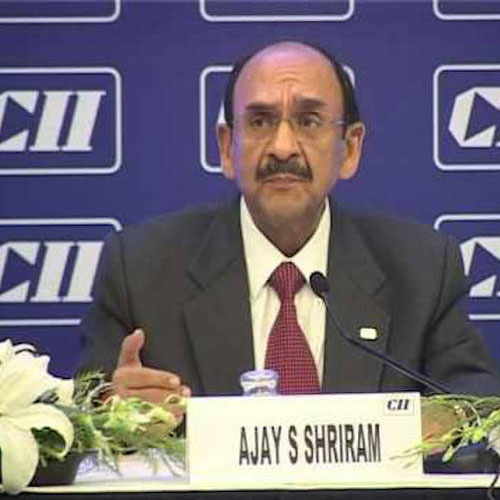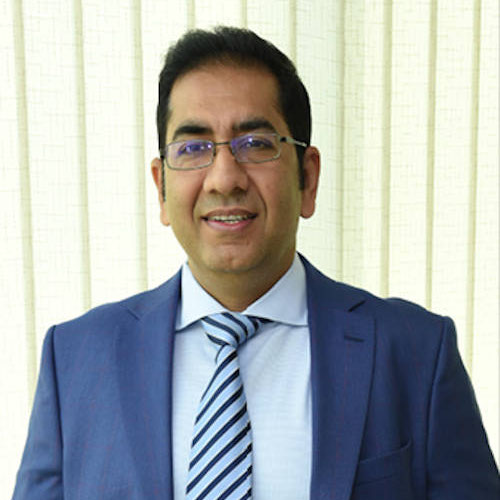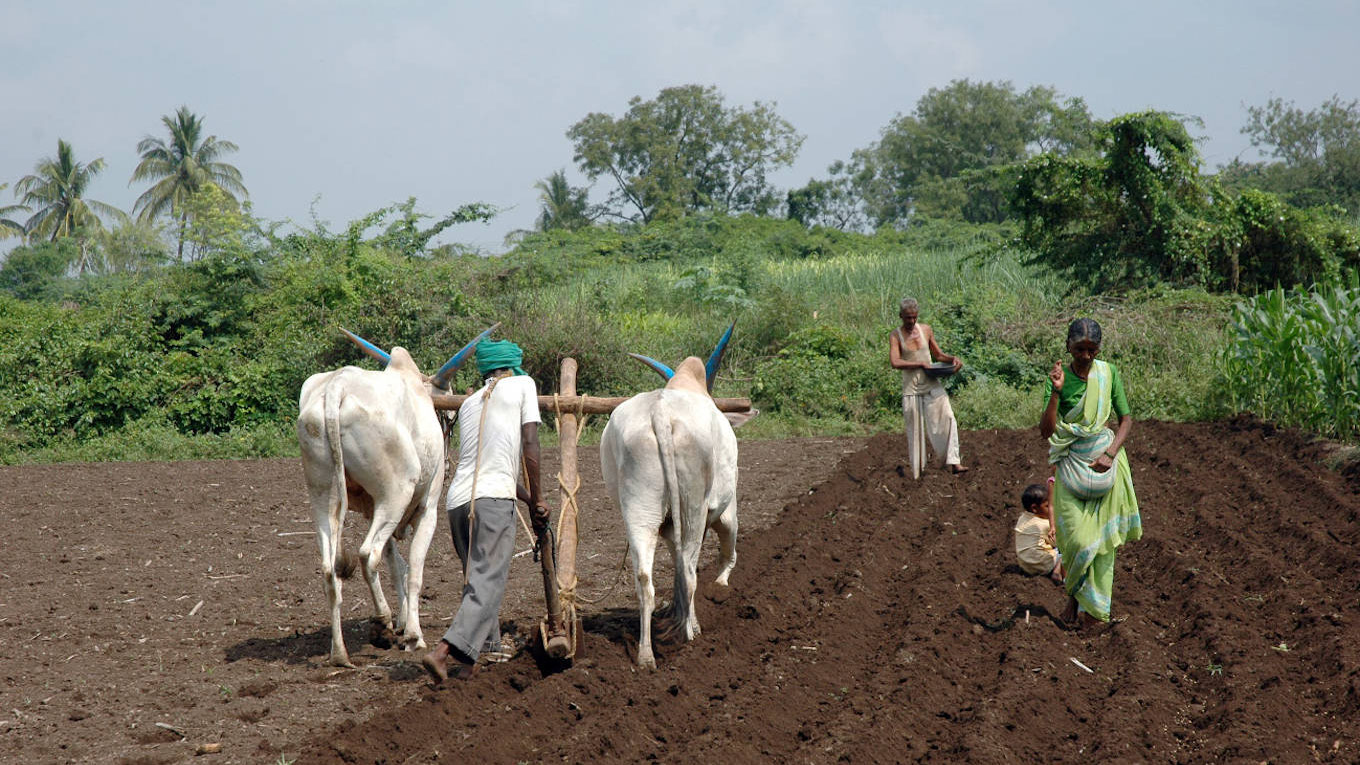-

Shriram: rural distress is severe
According to a discussion paper (titled: Changing structure of rural economy of India) released by Niti Aayog in 2017, there has been a massive change in the complexion of the rural economy between 1971 and 2011. While there has been no dent in its hegemonic positioning in agriculture output, its share in the manufacturing pie (this could be a surprising factor to many) has dramatically doubled in the four-decade period. At the same time, it has also picked up considerable strength in verticals like construction.
“Rural economy’s structure has changed,” points out Shivendra Shrivastava, an agriculture scientist associated with the National Institute of Agricultural Economics & Policy Research and a co-author of the report. “Agriculture’s contribution to rural income is in the 35-40 per cent range now; it used to be as high as 70 per cent around 1970. Manufacturing in rural areas now accounts for 50 per cent of the total national output and the figure in the services sector is 25 per cent.”
However, there has been a serious aberration in the growth pattern witnessed in rural India in recent decades. The growth in manpower deployed in rural pockets has not been in tandem with the growth witnessed in its different verticals. ‘After 2004-05, rural areas witnessed negative growth in employment despite 7.45 per cent annual increase in output,’ says the report.
In a way, the report points at a larger jobless growth scenario in rural India, which saw the volume of the labour force declining from 343 million in 2004-05 to 336 million in 2010-11. The drop was primarily in the agri and allied sectors and, during the same period, the number of workers in non-farm rural sectors went up from 94 million to 121 million.
Aberrations notwithstanding, there is clear evidence of rural India becoming a dynamic market in its own way in the past two decades and most of consumer-facing companies are interested in enhancing their share in their respective segments. According to a report released earlier, the rural FMCG market was projected to expand at a hefty CAGR of 17.41 per cent to $100 billion during 2009–25.
Earlier in 2015, a report by Accenture Research (Masters of rural markets: from touch-points to trust-points) clearly underlined the marked improvement in the aspirations of rural consumers, when it said: ‘Rural consumers are particularly aspiring or striving to purchase branded, high quality products. Consequently, businesses in India are optimistic about the growth of the country’s rural consumer markets, which is expected to be faster than urban consumer markets.’ And things have more or less evolved on the projected lines.
“For any well-established FMCG player in the country, the ratio between their urban to rural sales is broadly in the range of 65:35 and the latter has grown at a faster pace in recent years,” says Abneesh Roy, executive vice-president, Edelweiss Financial Services. Ankur Bisen, Senior VP, Technopak Advisors, presents a broader sense of the retail capability of rural India.
“As per an earlier estimate, in 2021-22, Indian merchandise retail is expected to reach close to $825 billion (excluding automobile sales). The rural share in the retail basket is estimated to be about 48 per cent and this translates into $396 billion in absolute sales. Most of this retail consumption would comprise food, FMCG, apparels, home, jewellery, etc,” he explains. And, with urban pockets becoming saturated for many consumer items, it’s not only agro-input giants – rural India has been the new growth turf for many automobile firms (especially two-wheelers and tractors) and other mass consumer product segments.
The scene during Covid I
That Covid I in 2020, which was responded to with prolonged lockdowns imposed by the government, could not impact much of the basic fabric of rural India’s economy was a matter of relief for everyone. In fact, agriculture, the main pillar of the rural economy, had displayed a robust growth pattern and, surprisingly, some of the revival, which Indian exports managed to make in the second half of the year, was also attributed to the rise in the shipment of a new class of commodities, which traditionally, had not been a stronghold of the Indian export basket.
“Covid 1.0 was largely an urban phenomenon, despite the large-scale reverse labour migration,” comments Sunil Sinha, principal economist, India-Ratings. “In fact, what saved rural areas during Covid 1.0 was the timely arrangements the state governments had put up to quarantine migrant labours before letting them enter their homes and intermingle with the local population. This prevented the spread of Covid-19 in rural areas.”
-

Malhotra: trend is reversed
And companies with a large rural sales orientation are confirming that even as 2020-21 began on a dismal note for them, their business later picked up considerably, thanks to the demand from the rural pockets. “For Dabur, rural India has been a key growth driver even through the pandemic. In fact, rural demand continues to outpace urban demand, and this is a result of our strategy of expanding our rural footprint. The year 2020-21 saw Dabur further deepen its village coverage and reach out to 60,000 villages by the end of March 2021, up from 52,298 villages a year ago,” Malhotra of Dabur points out.
Srinivasu Allaphan, director, sales & marketing, JK Tyre & Industries, speaks no differently. “We reported excellent performance in 2020-21 with a consolidated net revenue at R9,145 crore. As much as 55 per cent of our total demand is from the rural segment, which has been a key growth driver in 2020-21,” he says.
But, for the automobile industry in general, 2020-21 turned out to be a year of major drubbing. “In 2020-21, there was de-growth in sales of all segments, when compared to the previous years,” Rajesh Menon, director general, SIAM, commented while releasing the year-long figure for the industry in April. This had practically meant degrowth of (-) 2.24 per cent for passenger vehicles, with sales of 2.71 million units; (-) 13.19 per cent for two-wheelers, with sales of 15.12 million units; (-) 20.77 per cent for commercial vehicles, with sales 569,000 units; and (-) 66.06 per cent for three-wheelers, with sales of 216,000 units.
However, a mid-fiscal industry assessment had clearly earmarked buying support from rural India would be on the rise in the troubled year. In a segment like passenger cars, rural India’s contribution was estimated to have gone up by 2 per cent – from 38 per cent to 40 per cent. In the two-wheeler segment, rural India accounted for nearly 53 per cent of the total consumption and, in a year when the agriculture-led economy was doing well, the tractor sales boom took everybody by surprise, as it grew by a hefty 26 per cent during the course of the fiscal.
Agro input firms, meanwhile, claim that 2020-21 has been a brisk year for them, with the front-runners believed to have set afoot some innovative strategies to keep their farmers’ connect intact. “The year 2020 helped scale up digitalisation of Indian agriculture with Covid playing the role of an accelerator. It also provided us an opportunity to adopt new business models, such as partnerships with agri e-commerce players to facilitate doorstep delivery. Farmer acceptance for our new products was good – we launched four new brands in crop protection and two new hybrid seed varieties in corn. Overall, Bayer Crop Science achieved double-digit growth of 18 per cent last year,” says Simon Wiebusch, COO, Bayer Crop Science Division (India, Bangladesh & Sri Lanka).
Randhir Chauhan, MD, Netafim India, a major player in micro-irrigation technology solutions, shares a similar narrative. “To empower farmers for sustainable agriculture, our agronomists engaged in real-time with Indian farmers through the knowledge series Netafim Krishi Samvaad, digitally. The main objective was to disseminate scientific knowledge about micro-irrigation technology, crop-specific comprehensions and methods to increase yield. We were able to reach almost 20 million farmers across the country by relaying essential pre-sowing-related advisory services in their respective native languages through our digital connect programmes.”
The advanced estimates for the agriculture production during 2020-21 testify that the rural economy’s major pillar actually picked up more strength. Food grain production is estimated to have shot up to 303 million tonnes, as against 301 million tonnes in the previous fiscal, while horticulture production is slated to have touched an all-time high annual figure of 326 million tonnes. “Last year, major agrarian states like Punjab were affected by large-scale labour migration, an estimate says it saw the absence of a million farm labourers. But the farm owners somehow managed and it did not affect the output jump,” says Devinder Sharma, a renowned agriculture expert.
-

Nayar: negative impact on rural demand
At the same time, there is clear evidence of rural credit going through the roof in the troubled year. NBFCs specifically linked with rural borrowers are generally reporting a modest to massive growth in their business. Take the case of Moneyboxx Finance, a growing NBFC (BSE enlisted) operating in four northern states. “Almost 68 per cent of our total loans have been disbursed to cattle farmers, while the rest is for other local businesses like local kiranas. And, in the last fiscal, our loan book more than doubled reaching Rs62 crore at the end of 2020-21, as against Rs29 crore a year earlier. And our schedule payment receipts have been as high as 95 per cent,” says Deepak Aggarwal, co-founder & CFO of the firm.
The big question mark
However, with the Corona II wave (starting in late March and now believed to be ebbing out) moving in a large scale in the country, and demolishing the urban-rural divide this time, there is a larger apprehension now that last year’s formidable shield in the form of the rural economy may eventually end up becoming a blunt weapon as the year progresses. The spectre of another wave looms large and, in the event of Corona’s third chapter, the extent of damage is unimaginable. Even in a regular scenario (not including the hypothetical assessments of what Corona III can do) post Covid II, research agencies are indicating troubles ahead during 2021-22 vis-à-vis rural demand.
“We expect rural sentiment to be dampened by the sharp rise in rural infections during the second wave of Covid-19, when compared to 2020. In our view, the impact of the rise in medical expenses on disposable incomes, loss of employment as well as remittances related to the return of a section of migrant labourers to the hinterland, will have a prolonged negative impact on rural demand, especially for big ticket items,” observes Aditi Nayar, principal economist, ICRA.
India-Ratings’ Sunil Sinha has a similar projection to share. “There is a strong likelihood that the expenditure pattern of rural households will be different. Households in rural areas will be more concerned about the rising or expected rise in health expenditure and will cut down on non-essentials,” adds he.
The scenario projected by economists and other stakeholders has two distinctive components. Firstly, with the good monsoon forecast, agriculture is again slated to do well in terms of output and the overall growth is expected to stay in positive territory. “Given the high base of the last couple of years, ICRA expects the GVA growth of agriculture, forestry and fishing (at constant 2011-12 prices) to ease to 2.2 per cent in 2021-22, from the healthy 4.3 per cent in 2019-20 and 3.6 per cent in 2020-21,” says Nayar.
“Even though there could be a modest jump in input cost in farm activities, because of factors like high diesel prices, labour shortage resulting in high wages, etc, I do not foresee any drop in production. Farmers do not have other earning avenues and they will do their best within their available resources,” adds Sharma.
-

Menon: there was a degrowth in sales
But it’s the non-farm activities and other related factors in the rural pockets that are expected to create demand stress. For instance, the problem of rising health expenditure of rural households is further compounded by the fact that due to job losses in cities and other places, a substantial working population has come back to their native villages with little scope to contribute meaningfully. “There is something called the domestic remittance market, which as an estimate suggests is close to a staggering Rs2 lakh crore. These are mainly the members from farmers’ families working in cities, even doing odd jobs but sending back some money. But a substantial chunk is back with restrictions and lockdowns at several places and such families will be cautious in their expenditure till things are restored,” says farmer leader Pushpendra Singh.
“The factor that will adversely impact rural demand and expenditure during Covid 2.0 is the decline in non-agricultural activities, as most of these activities require high human contact, be it the work of carpenter, blacksmith, auto, tractor repair, construction, transport, storage, etc. Thus, even the employment offered under the Mahatma Gandhi National Rural Employment Guarantee Scheme in rural areas may be less effective, if family breadwinners fall to the Covid-19 infection,” adds Sunil Sinha of India-Ratings.
India-Ratings, in a recent report on agriculture, has also pointed at the falling wage rates in the countryside (the largest chunk of rural population is believed to consist of daily wage earners and not farmers). The report says (see graphics) that average agricultural wage growth during November 2020-March 2021 declined to 2.9 per cent from 8.5 per cent during April-August 2020 (November 2019-March 2020: 6 per cent). Similarly, wage growth for non-agricultural activities during November 2020-March 2021 declined to 5.2 per cent from 9.1 per cent during April-August 2020 (November 2019-March 2020: 4.3 per cent).
The broader inference drawn from an equation of this nature on the demand side means that ‘while demand for agricultural credit and agricultural inputs such as fertiliser, pesticides could remain strong in view of the third consecutive year of a near normal monsoon, the demand for FMCG products, automobiles especially tractors and two-wheelers is expected to suffer’.
Growing uncertainty
Nothing surprising – there is a marked nervousness or feeling of uncertainty within the segments which rely on rural buying for a sound performance. “We would love to maintain a double-digit growth, but there is growing uncertainty in the market with the second and more devastating wave of Covid. So, it would be too early to hazard a guess on future growth numbers,” says Malhotra of Dabur. “Rural India’s demand for FMCG products in 2020-21 was good. The demand was 1.2-1.5x of urban demand. But, as of today, there is a bit of nervousness which is quite understandable given the fact that everybody is grappling with a once-in-a-century crisis. But after one month, we can see a revival happening,” emphasises Aneesh of Edelweiss.
And despite promising projections for agriculture, nervousness is a sentiment which has even gripped companies directly linked with farm businesses. “While it is difficult to forecast the exact impact on demand for agri-inputs, we do foresee challenges such as cash liquidity for farmers as well as challenges around liquidation with retailers and distributors. With the closure of local mandis and restricted timings for agri-retail stores, market linkages and timely availability of agri-inputs might also be a challenge,” says Simon of Bayer Crop Science.
“The demand in the first month of 2021-22 continued to be at 55 per cent. However, during May, we did experience a marginal dip from 55 per cent to 48 per cent but, having said that, we are quite confident that the market conditions will improve from June onwards and help us bounce back,” adds Srinivasu Allaphan of JK Tyres.
-

Allaphan: conditions will improve
The government, on its part, has taken some basic steps meant to directly support the rural economy. For instance, it announced increasing minimum support prices (MSP) for all mandated kharif crops for marketing season 2021-22. The hike announced for paddy, the main kharif crop, is 3.8 per cent. Prior to this, last month, the Modi government announced a massive hike of 140 per cent in the subsidy provided by it for DAP fertiliser – from Rs500 to Rs1,200 per bag – to ensure that manufacturers do not pass on the rising input prices to farmers. Furthermore, the government has now also announced the extension of ongoing free additional food grains distribution scheme under the Pradhan Mantri Garib Kalyan Anna Yojana till Diwali.
However, farmer leaders like Pushpendra Singh do not seem to be enthused with the government’s recent support lines extended to the farming community. “The MSP announced for the main crop paddy is much below the average inflation rate and, therefore, it hardly makes any sense. The government is missing the big picture in terms of supporting the rural economy or farming communities in a big way at the current troubled juncture. For instance, it should look at the option of enhancing the credit limit under Kisan Credit Card, which is mostly given in the form of a secured loan. You put additional money in their hands and they can resume their discretionary buying,” he suggests.
Industry veterans like Shriram also point at a series of steps which will be needed to sustain the growth momentum in the rural economy in 2021-22. These includes prioritising inoculating rural India as vaccine supply eases; stock piling of oxygen and essential medicines at primary health centres; promoting village roads, rural housing and highway construction to generate employment and putting money in the hands of daily wage earners and self-employed who have lost their livelihood.
“Cash transfer will provide much needed relief and create demand for industry. We cannot afford to let our guard down, and must be prepared for the third wave, should it hit us,” he emphasises. Quite clearly, in the face of extreme adversity, rural economic management this year will draw more attention from observers and stakeholders.







































